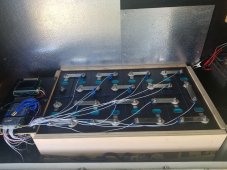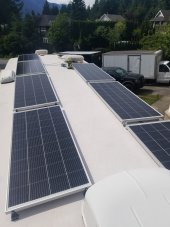Wow that's a very nice clean setup! I recently bought 40 acres to build a homestead. Been considering buying a small travel trailer myself to bring to the property in the meantime until I build something. Would make a fun project too.
Your goals may make this an undesirable idea. That’s fine. FWIW I’ve modified three campers DIY now, including 1 for winter use. 2nd winter use happening a little at a time right now. (everything I spend <= normal monthly rent is ‘free’ or a savings)
However, I’ve worked on quite a few campers as part of vocation so I guess to some that’s “professional.”
Anyways, if a nice long-term camper with four-season is in mind, I’ve found the “better” (or top of line but not airstream or other big dollar) campers from the mid 1970s - if acquired in excellent repair- are the best, most modifiable and upgradable RVs for stationary or mostly stationary use.
Other than the in-wall framework they are decidedly less “modular” and you can take them apart from inside a little or a lot at a time. This includes floors and allows insulating for subfreezing weather rather easily. More modern commodity RVs are less stout, and too many things are adhered together. Their structure is not only dependent on that, but it doesn’t always come apart well or permit rewiring like the old ones. Many newer ones often will not even tolerate walking on the roof.
Just some thoughts. Depending on your goals they may not be relevant.
The one I wish I’d never parted with 20 years ago was a 1957 Forester with sealed combustion convection ‘furnace,’ absolutely gorgeous golden maple panelling walks and ceiling with solid maple 6” radius curved corners, and an amazing aluminum-lined shower stall.
The original very retro refrigerator still ran and worked well and had drains and a rack for block ice. With the four or five propane mantel lighting fixtures with classic globes it made a truly off-grid electricity-free comfortable place to be.
You may not care about the kool-factor or retro ambience but that is something that appealed to me and still does. I love building totally retro-looking things with as much disguise as possible to incognito LED lights and other modern components in a retro setting.
Good luck with that 40 acre find! Sounds great to me!




